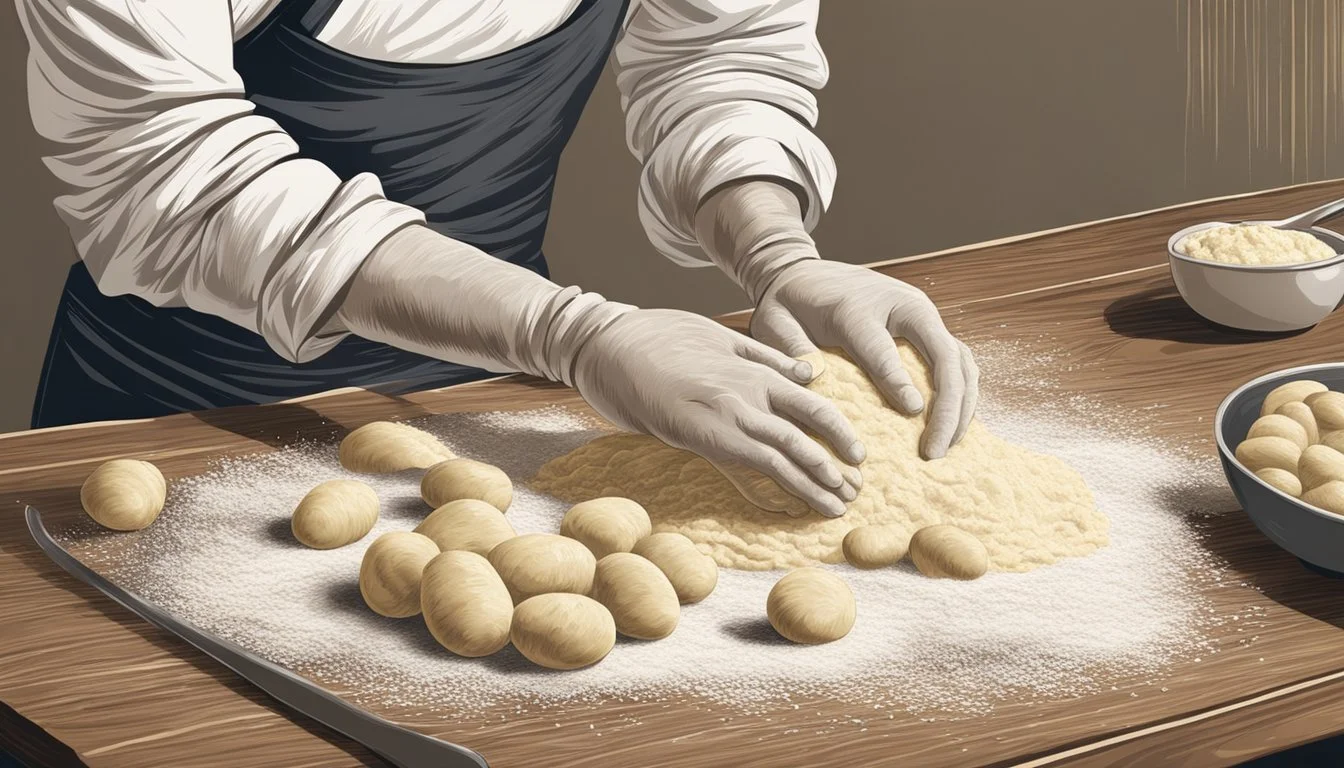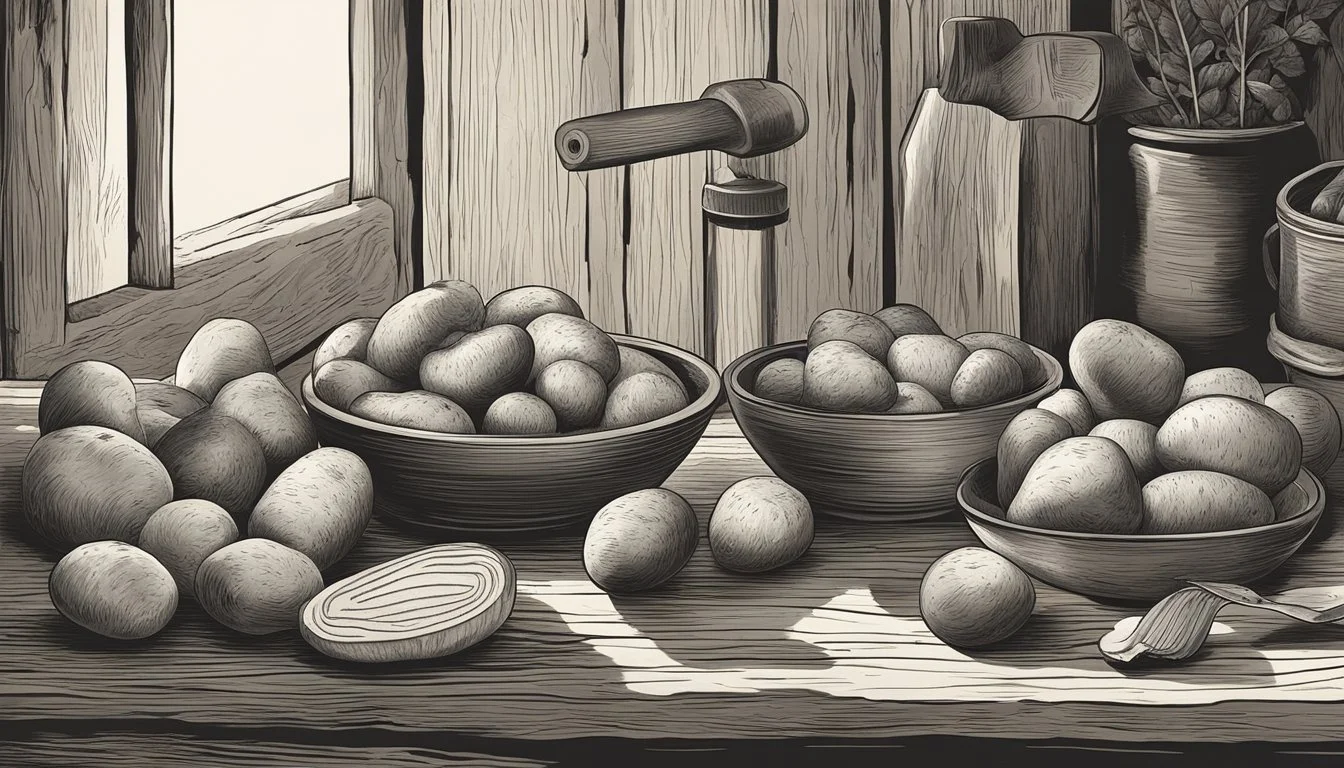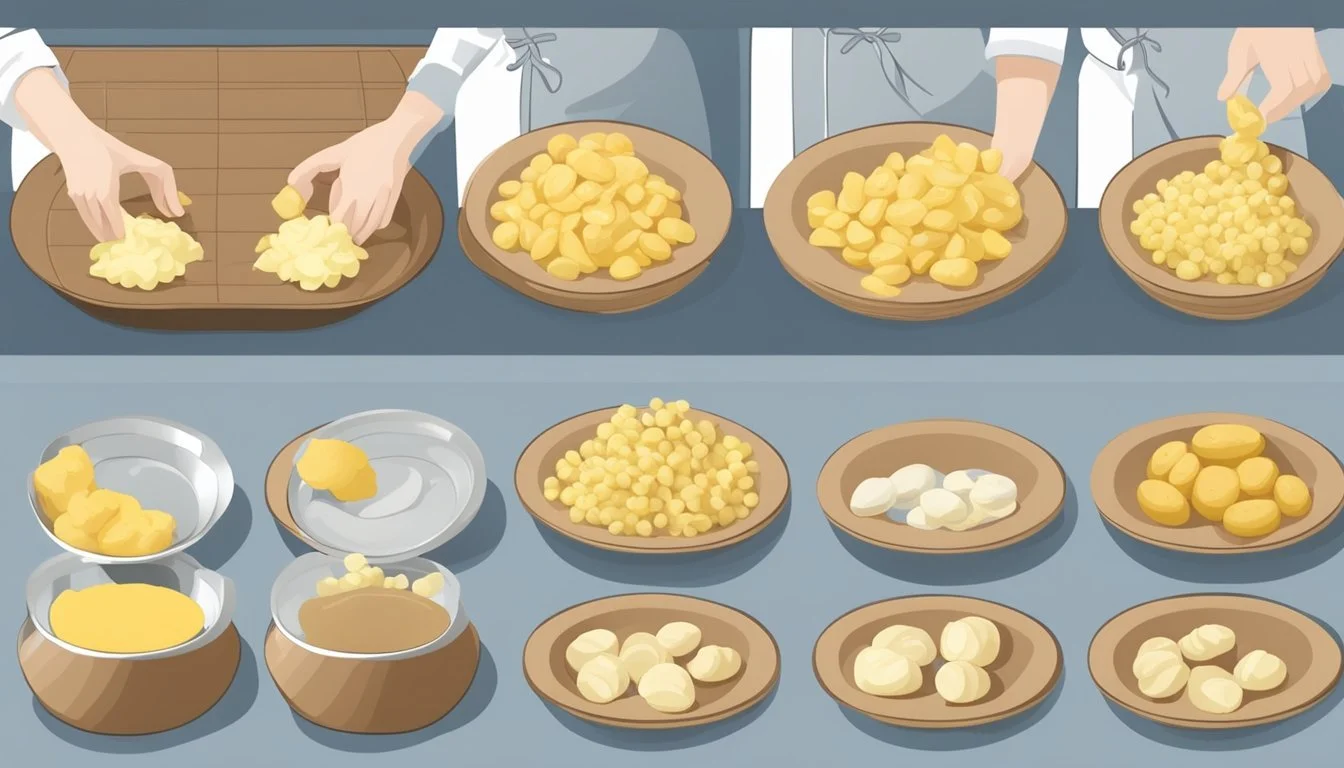Potato Peel Gnocchi
A Pillowy, Rustic Pasta Reinventing Kitchen Scraps
Potato gnocchi are a beloved staple in Italian cuisine, often lauded for their pillowy texture and ability to marry well with a variety of sauces. This rustic pasta (What wine goes well with pasta?) has its roots in the culinary tradition of transforming simple ingredients - potatoes, (What wine goes well with potatoes?) flour, and eggs - into an elegant dish that showcases the chef's craftsmanship. The key to creating the perfect potato gnocchi lies in understanding the nuances of the potatoes themselves; their type, preparation, and the method of incorporating them into the dough are all critical factors.
The process of making homemade potato gnocchi begins with selecting the right type of potatoes. Starchy varieties like Russet or Yukon Gold are preferred for their fluffy texture post-cooking, which yields lighter gnocchi. They are typically boiled until tender, though some recipes call for baking, which can reduce the moisture content and result in a finer dough. Once cooked, the skin is removed, and the potato flesh is mashed or pressed through a ricer to ensure a smooth consistency, void of any lumps.
Achieving the perfect dough requires a delicate balance—too much flour and the gnocchi become dense; too little, and they may fall apart during cooking. Incorporation of a beaten egg lends elasticity to the mixture. The dough is then rolled into long logs, cut into bite-sized pieces, and traditionally pressed with a fork or a gnocchi board to create ridges that will hold sauce. When they are cooked in boiling salted water, the gnocchi rise to the surface, indicating that they are ready to be scooped out and combined with the sauce of choice, delivering not just a pasta but an experience.
Selecting the Right Potatoes
When creating potato peel gnocchi, choosing the appropriate potato variety is crucial for achieving the perfect texture. Two specific types stand out: Russet potatoes and Yukon Gold potatoes.
Russet Potatoes Yukon Gold Potatoes Highly starchy Moderately starchy Thick skin, ideal for peeling Thinner skin, still suitable for peeling Result in light, fluffy gnocchi Yield a slightly denser, but creamy texture Absorb less moisture during cooking Natural buttery flavor enhances gnocchi
Russets are high in starch and low in moisture, making them the premier choice for gnocchi. Their starchy nature contributes to a pillowy texture, while the low moisture content prevents the gnocchi from becoming soggy. Additionally, their thicker skins are beneficial when peeling after baking.
In contrast, Yukon Gold potatoes offer a balance between starchy and waxy properties. These potatoes have a natural buttery flavor and a velvety texture after cooking, which can enrich the gnocchi experience.
For the best results, one must consider the cooking method as well. Baking the potatoes, as opposed to boiling, is recommended. Baking ensures minimal moisture absorption. The drier the potato, the less flour is needed, yielding lighter gnocchi.
In short, opting for starchy potatoes like Russets or Yukon Golds and baking them ensures a superior gnocchi texture. Select potatoes that are firm, with no signs of sprouting or greening, to guarantee freshness and flavor integrity.
Preparing the Potatoes
Before delving into the intricacies of crafting pillowy gnocchi, it’s essential to prepare the potatoes properly, as they are the foundation of this rustic pasta. Achieving the right texture and consistency in your gnocchi starts with meticulous potato preparation.
Cleaning and Boiling
Begin by thoroughly washing the potatoes to remove any dirt or debris. For gnocchi, the preferred potatoes are ones with white flesh such as Russets, which provide the starchiness that's ideal for gnocchi making. Place the cleaned potatoes in a pot with enough cold salted water to cover them. Boil the potatoes until they are fork tender, which usually takes about 30-40 minutes depending on the size of the potatoes.
Ricing and Cooling
Once boiled, promptly peel the potatoes while they are still warm; yet cool enough to handle. A potato ricer or food mill is the best tool to achieve a fine, fluffy texture. Pass the warm potatoes through the ricer onto a large cutting board or a clean surface. Allow the riced potatoes to cool, which helps to eliminate excess moisture and ensures a better gnocchi texture.
Forming the Dough
To form the dough, incorporate all-purpose flour—or semolina for a firmer texture—into the cooled potatoes. Season with salt, and then add a beaten egg, which acts as a binder. Carefully fold the ingredients together and knead gently until it forms a cohesive dough, taking care not to overwork it to prevent the gnocchi from becoming dense.
Shaping Gnocchi
Cut a slice of the dough and roll it into a long, even rope. Using a bench scraper or knife, cut the rope into small pillow-shaped pieces. To create grooves that better capture the sauce, roll each piece against the tines of a fork or over a wooden gnocchi board. This shaping technique gives gnocchi its characteristic ridges.
Cooking and Serving Gnocchi
To cook, return the pot of water to a boil, adding salt as necessary. Place the gnocchi in the salted boiling water and cook until they float to the surface, indicating they are done. Retrieve them using a slotted spoon and transfer directly into a serving bowl. Immediately toss the gnocchi with your chosen sauce—whether it be butter sage sauce or marinara—to fully coat and serve promptly.
Storing and Freezing
To store, place the uncooked gnocchi in a single layer on a baking sheet, and once frozen solid, transfer to a freezer bag. They can be cooked directly from frozen. Properly frozen gnocchi can be a time-saver for future meals.
Pairing with Sauces
Potato gnocchi pairs well with a variety of sauces, from the simple and rustic butter and cheese to more elaborate concoctions like carbonara and cream-based pasta sauces. Select sauces that complement the delicate flavor of the potato without overpowering it.
Diverse Variations
Apart from classic Italian potato gnocchi, there are other variations such as ricotta gnocchi or pumpkin gnocchi. Each variation brings a different flavor and texture profile, expanding the gnocchi family beyond the traditional type.
Top Tips for Perfect Gnocchi
For perfectly light and fluffy gnocchi, ensure minimal moisture in the potatoes, avoid over-kneading the dough, and use the right ratio of flour. Remember, less is more when shaping gnocchi; they shouldn't be overworked.
Frequently Asked Questions
This subsection would answer common queries related to gnocchi preparation, such as the best type of potato to use, how to prevent gnocchi from falling apart in boiling water, and whether or not to add egg to the dough.
Acknowledgements and References
This part would acknowledge the sources from which information has been compiled and provide references for further reading and recipe comparison, thereby allowing for the detailed acknowledgment of contributions from various culinary experts or historical sources.




